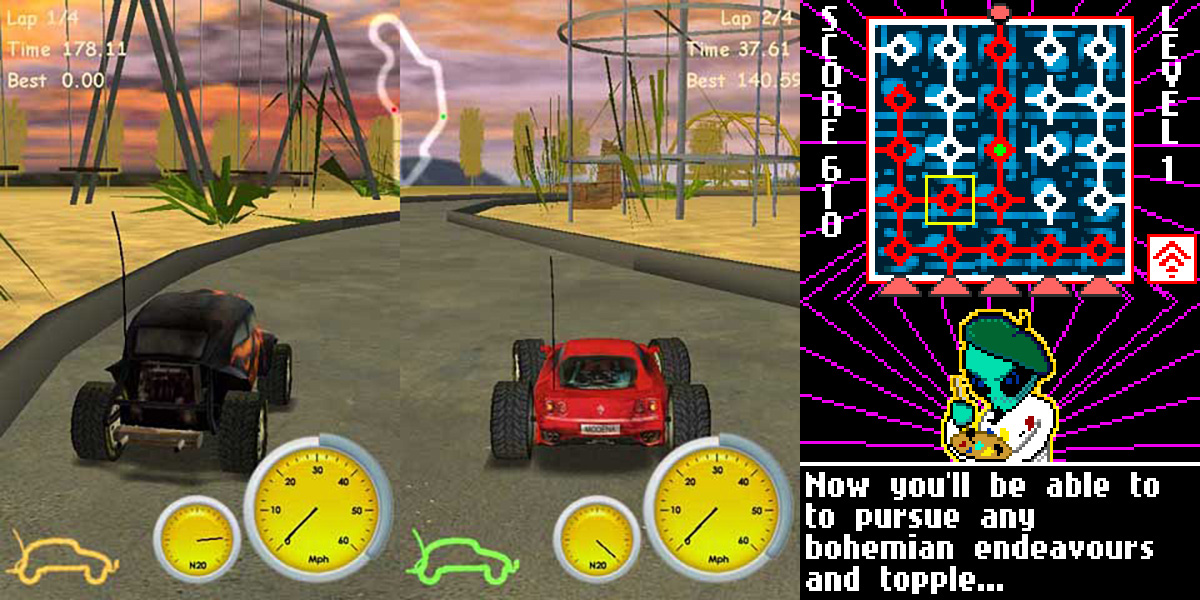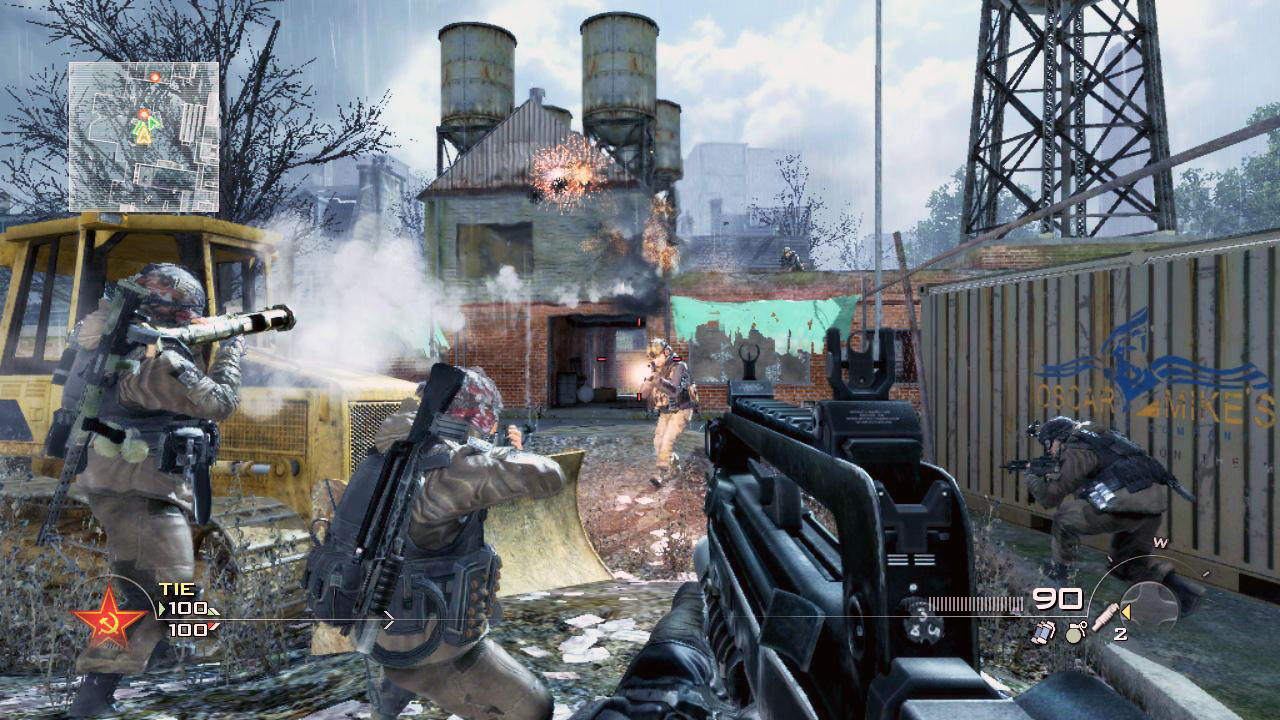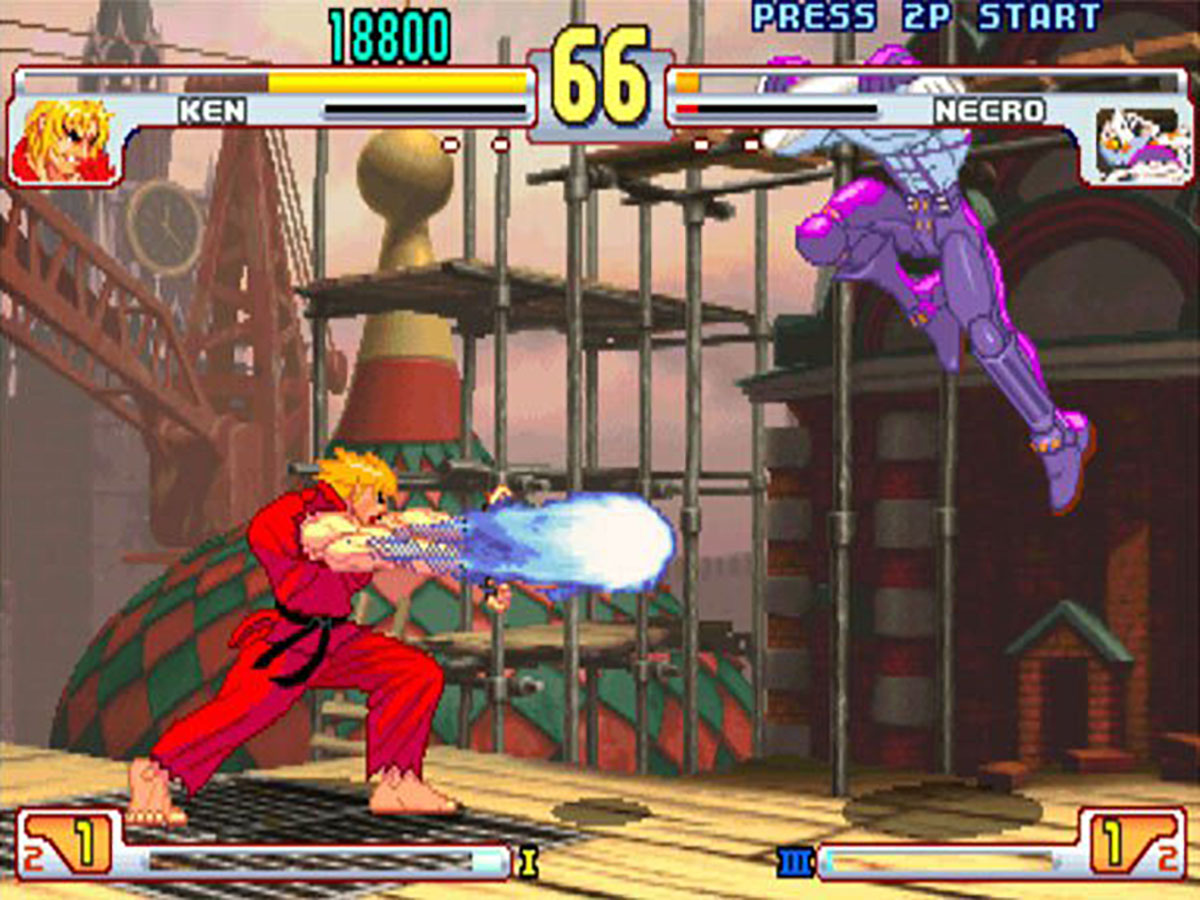Prior to becoming a programmer, I catalogued my neophyte design ideas and sought to implement them in various game-creation toolkits such as VERGE, Adventure Game Studio, and GameMaker Studio. This led me to learn basic scripting, map design, and systems logic.

Eventually I tried my hand at modding games like Quake and Morrowind, discovering more low-level elements of game development such as memory and asset management. This went side-by-side with my Computer Science education where I attempted to turn every school project into a video game, including an OpenGL racing game I created with two partners.
During the development of RC Racer, I was responsible for creating wrappers for external libraries such as FMod, providing 3D assets and textures, and tweaking all of the game’s physics for a varied player experience. The game went on to be showcased by the college at recruitment shows, and got me invited to a post-grad game development competition prior to my own graduation. The contest was a two-week sprint to create a small J2ME title, with the winner getting a publishing deal.
Although my entry received second place, I was still able to independently get it published via Kalador Entertainment, and the mobile-development experience helped me transition to Capybara Games soon after that company’s inception.

Prior to leaving our respective employers to found Incubator Games, I researched various ideas for our first original-IP title. One of my initial concepts was a minigolf game, but it never reached fruition as the newly-released iPhone completely changed the mobile landscape.
With much more powerful hardware and a touch-screen interface, the iPhone required a different overall approach. To better match the device, I created a prototype for Tribes of Mexica, a game based on revolving and pairing circles of combatants.
Taking a tentative step toward working with consoles, I used Microsoft’s XNA framework to create the initial version of Tribes of Mexica. While eventually it’d be abandoned for a proprietary system able to deploy to iOS devices, XNA’s built-in asset compatibility, memory management, input detection, shaders, etc., allowed me to focus strictly on the gameplay.
The AppStore marketplace quickly embraced a F2P format causing us to move on from the premium-model Tribes of Mexica, but the endeavour helped to establish our own prototyping framework. We added a particle editor, UI editor, tweening system, and entity management system, further eliminating startup costs and creating a speedy testing platform for all future prototypes.









